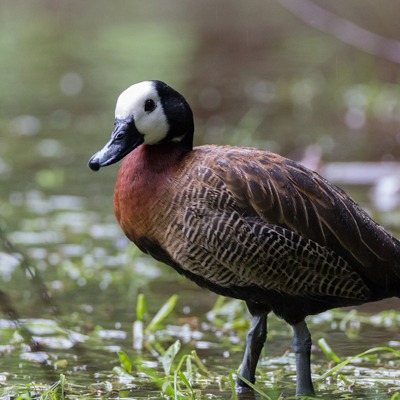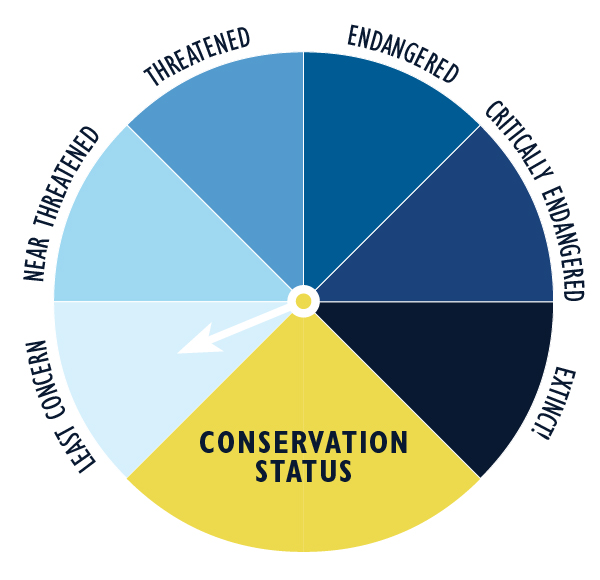
About White-Faced Whistling Duck
This long-legged duck has a distinct white face and neck patch that is different from the rest of its otherwise brown and black feathered body. Both the male and female whistling duck are similar in appearance, with the offspring typically having a grey, white or ash-grey colored face, throat, and bottom.
Habitat
The white-faced whistling duck is found in tropical parts of Central and South America, and Africa. They occupy a variety of freshwater habitats, including lakes, swamps, large rivers, flood-plains and some artificial habitats, such as rice fields and sewage farms.
Diet
Their diet consists mostly of grass, seeds, mollusks, and other plant-based foods in their surrounding habitat.
Family Life
During their breeding season, the white-faced ducks form colonies and create nests in long grass or reedbeds using vegetation in the surrounding area. They typically lay four to twelve eggs, which are then incubated for around one month. The chicks fledge, develop wing feathers for flight, eight weeks after hatching. During their incubation period, the duck is especially susceptible to predation, which forces them to seek shelter in thick, grassy areas.
Conservation Status
The conservation status of the White-Faced Whistling Duck is classified as least concern.
Threats
- This species of duck is not under any immediate threat; however, they are susceptible to avian botulism and avian influenza, meaning they may become threatened by future outbreaks of these diseases.
- In parts of its African range, the white-faced whistling duck is hunted for local consumption and trade.
Facts about White-Faced Whistling Duck
Class:
Aves (bird)Order:
Anseriformes (duck, geese, swans, and relatives)Family:
Anatidae (duck, geese, and swans)Genus:
Dendrocygna (whistling-ducks)Species:
Dendrocygna viduata (white-faced whistling-ducks)Life Span:
10 years (wild) / 12 years (zoo)Size:
1.2 – 1.5 feet (36 – 45 cm)Weight:
1.1 – 1.8 pounds (0.5 – 0.8 g)
Fun Facts
- They really do whistle! Their name comes from their distinctive look and high-pitched whistling calls.
- Ducks in tress? It’s not too often you see a duck nesting in a tree, however, the whistling duck has a habit of perching on tree branches.
- These ducks have broad wings and though they’re not fast, they’re highly maneuverable in the air.











